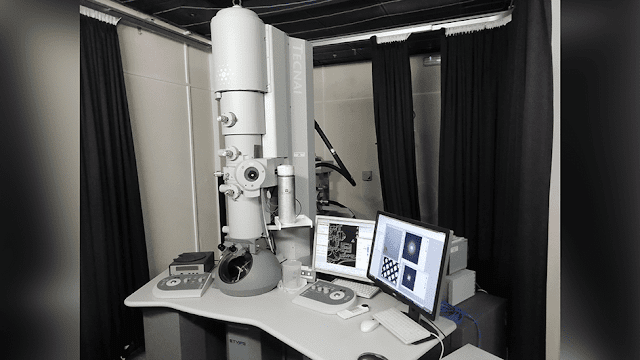Peering into the Microscopic Universe: The Advancements in Global Electron Microscopy
 |
| Global Electron Microscopy |
Unraveling
the Nanoscale Mysteries
At the heart of Global
Electron Microscopy lies the ability to visualize objects at the
nanoscale, far beyond the resolution limits of traditional light microscopes.
By harnessing beams of electrons instead of photons, electron microscopes can
achieve resolutions on the order of atomic dimensions, enabling researchers to
observe and manipulate matter at unprecedented levels of detail. This capability
has opened new frontiers in fields such as materials science, nanotechnology,
and biophysics, driving discoveries and breakthroughs across diverse
disciplines.
Pushing
the Boundaries of Resolution and Sensitivity
Recent advancements in electron microscopy
technology have pushed the boundaries of resolution and sensitivity, enabling
scientists to delve deeper into the microscopic realm. State-of-the-art
electron microscopes incorporate features such as aberration correction,
high-speed detectors, and advanced imaging algorithms to enhance image quality
and acquisition speed. These capabilities empower researchers to capture
dynamic processes, observe transient phenomena, and investigate materials with
unprecedented precision and accuracy.
Applications
Across Diverse Fields
The impact of global electron microscopy extends
across a wide range of scientific disciplines, from physics and chemistry to
biology and engineering. In materials science, electron microscopes are used to
characterize nanostructured materials, study defects and interfaces, and
develop novel materials with tailored properties. In biology, electron
microscopy enables researchers to visualize cellular organelles, protein
structures, and molecular interactions, shedding light on fundamental
biological processes and disease mechanisms. In nanotechnology, electron
microscopes play a crucial role in fabricating and analyzing nanoscale devices,
sensors, and materials with unique electronic, optical, and mechanical
properties.
Emerging
Trends and Future Directions
Looking ahead, the field of global electron
microscopy is poised for further advancements and innovations. Emerging trends
such as cryo-electron microscopy, correlative imaging, and in situ microscopy
are revolutionizing our ability to study biological specimens, dynamic
processes, and nanostructured materials in their native environments.
Additionally, developments in machine learning, data analytics, and
computational modeling are transforming the way we acquire, analyze, and
interpret electron microscopy data, opening new avenues for discovery and
exploration.
Global electron microscopy represents a powerful and
versatile toolkit for scientific inquiry and discovery. By peering into the
microscopic universe with unprecedented clarity and precision, electron
microscopes continue to unravel the mysteries of nature, inspire technological
innovation, and advance our understanding of the world at the smallest scales.
As we journey deeper into the nanoscale realm, the possibilities for exploration
and discovery are boundless, promising new insights, discoveries, and
breakthroughs that will shape the future of science and technology.



Comments
Post a Comment